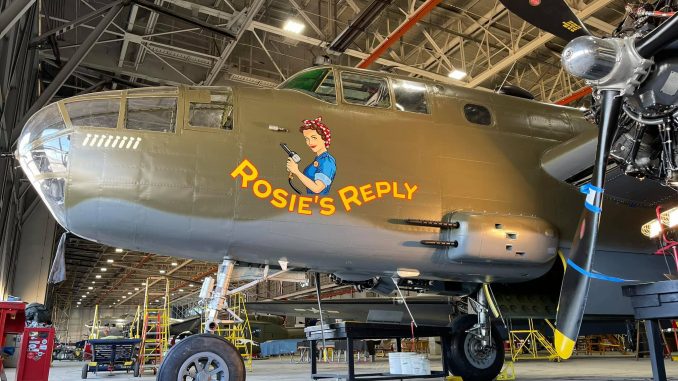
Back in early January, we published a story detailing the repaint of the Yankee Air Museum’s North American B-25D Mitchell bomber, long known as Yankee Warrior, into a factory-fresh livery, free of names and nose art. We always knew that the museum planned to give her a new name and nose art though, and to tie these details into the museum’s larger goals for educating the public about aspects of the Greatest Generation. Well, just yesterday, they unveiled the B-25’s new name, Rosie’s Reply…
While it is true that the new name and nose art never graced a B-25 during WWII, they are authentic in both style and attitude to the period. Furthermore, they reflect the aircraft’s renewed mission to inspire America by honoring the accomplishments of female aircraft factory and shipyard workers, who became collectively represented by the iconic “Rosie the Riveter” recruitment character during WWII. And considering that the Yankee Air Museum is actually based within a surviving section of the once-massive factory where thousands of women helped Ford manufacture B-24 Liberator bombers (at the rate of one every hour during peak production) the new name fits perfectly into that story.
As we reported in January, the B-25 received her new paint in December (courtesy of Kalitta Air), replicating the exact color specifications she wore flying eight combat missions from Corsica during 1944, but the next step involved providing the aircraft with a new identity and nose art. Kevin Walsh, the museum’s President and CEO, chose well-known aviation artist Chad Hill to both create and execute this new design.
Hill is a highly accomplished artist with a great deal of experience in recreating nose art. His artistic career began at an early age, thanks to his parents. His mother taught him how to draw, while his father and uncles instilled a love for hot rods, tractors, and WWII airplanes in his young heart. Hill has built a strong reputation for his artistic skills over the past 27 years, and at Django Studios he specializes in Automotive and Aviation Design, and Marketing Branding. During this time, he has painted period-correct nose art on a number of restored World War II aircraft, while his illustration work can be found on display at a variety of aviation museums, air shows, and even at the Smithsonian’s National Air & Space Museum.
When it came to the B-25’s new nose art, Kevin Walsh wanted something historically correct but which also included a contemporary touch to help with the museum’s branding and fundraising efforts. Chad Hill, with assistance from Dan Desko at the B-25 History project, produced a study to help the museum choose the final design.
The museum’s B-25D Mitchell, serial 43-3634, emerged from North American Aviation’s Kansas City factory in 1943 painted in overall Olive Drab with Neutral Grey undersides. This paint scheme was for the Mediterranean Theater of Operations, where the museum’s Mitchell served briefly. Based in Corsica, the airplane flew eight missions with the 57th Bomb Wing, 340th Bombardment Group, 489th Bomb Squadron against high value targets in Italy. Keeping this history in mind, Chad Hill chose a lettering style for Rosie’s Reply by referring to available photographs of nose art designs from other aircraft in the same unit. The 340th was in the thick of Mediterranean Theatre action too, seeing combat from April 1943 until April 1945. Furthermore, they received a Distinguished Unit Citation for the period April–August 1943 when, although handicapped by difficult living conditions and unfavorable weather, the group supported the British Eighth Army in Tunisia and Allied forces in Sicily.
Referring to the completed artwork, Dan Desko noted that: “It is an extremely accurate reproduction of this B-25D’s livery in the 57th Bomb Wing, 340th Bomb Group, 489th Bomb Squadron. Yankee Air Museum has done a marvelous thing with its aircraft. In one fell swoop, this plane honors the 489th Bomb Squadron, the home front workers and Kansas City, where this plane was built. This is living history!”
The Yankee Air Museum has long-wanted to pay formal tribute to the women who contributed to the war effort on the home front. While the now-iconic “We Can Do It” poster, featuring the no-nonsense Rosie-the-Riveter character skyrocketed in popularity during the 1980’s, the original hung in relative obscurity within a Westinghouse plant during a two week period in 1943 as part of a bi-weekly series to help recruit female factory workers. The artist who created this wartime poster is supposed to have drawn his inspiration from a 1942 photograph picturing a female factory worker named Naomi Parker Fraley. With this in mind, Chad Hill recommended basing the nose art character on Fraley, as this represented an educational opportunity and a way of digging deeper into the history of the women’s workforce during WWII, because Fraley was indeed a real person.
“After the attack on Pearl Harbor, American men left industry in huge numbers to enter the military, creating a severe labor shortage,” said Museum President Kevin Walsh. “To answer this aggression and arm the military, manufacturing in all sectors had to increase. A call for workers went out and women answered that call.”
Walsh explained that the women of the Greatest Generation, entering workplaces once dominated by men, made the deciding difference in the war, providing those at the front with the essential tools for defeating the enemy. “Their ‘we can do it’ confidence became the rallying cry to which America responded,” said Walsh. “Theirs was the strength needed to help produce enough equipment to defeat the enemy. Without them, there would not have been an Arsenal of Democracy.”
Yankee Air Museum collaborated with The B-25 History Project and the Fairfax Industrial Association in Kansas City to connect with original Rosies who actually worked on these aircraft at the North American Aviation plant.
When asked for her thoughts about the Yankee Air Museum B-25’s new name honoring the women of her generation, Marion L. White’s replied, “We did it then, and we can still do it! I hope this inspires more young women to believe in themselves and find a good way to help their country!”
“As an active member of Yankee Air Museum, and President of the American Rosie the Riveter Association Michigan Chapter, I am very proud with the initiative in Rosie’s Reply,” said Bette Kenward. “The Greatest Generation is aging with the youngest being in their mid-nineties. We must continue to show them honor and this does that in a momentous way.”
Kenward explained that one of the reasons the yellow “We Can Do It!” Westinghouse poster remains so powerful seven decades later is because it still gives people courage to face any challenge today.
Yankee Air Museum is planning a homecoming tour for their B-25 this October. Rosie’s Reply will fly to Kansas City, the city of her birth, to take part in the Fairfax Industrial Association’s annual festival. It will surely be an momentous reunion for all concerned!
For more information about the Yankee Air Museum, please visit www.yankeeairmuseum.org.



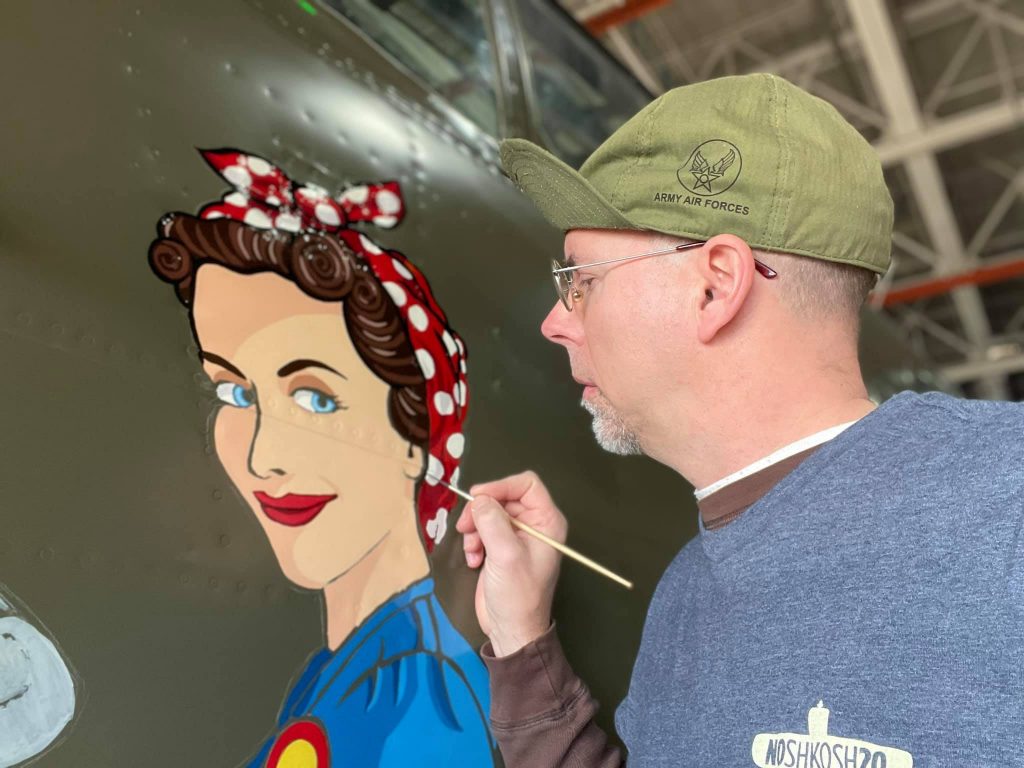
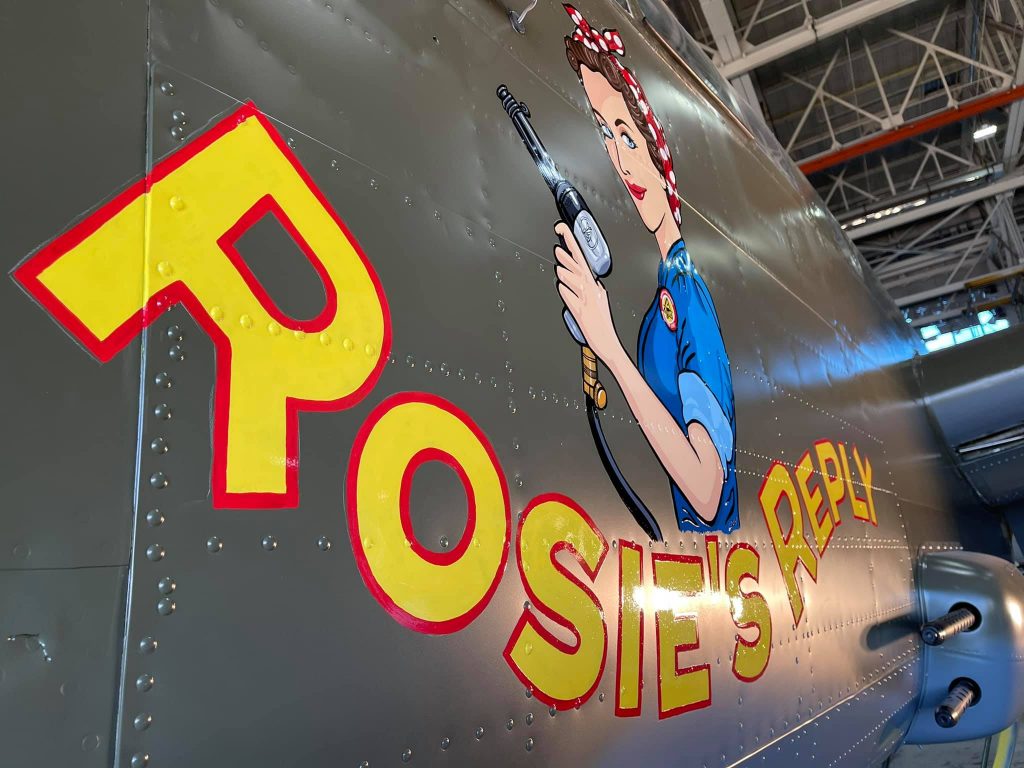
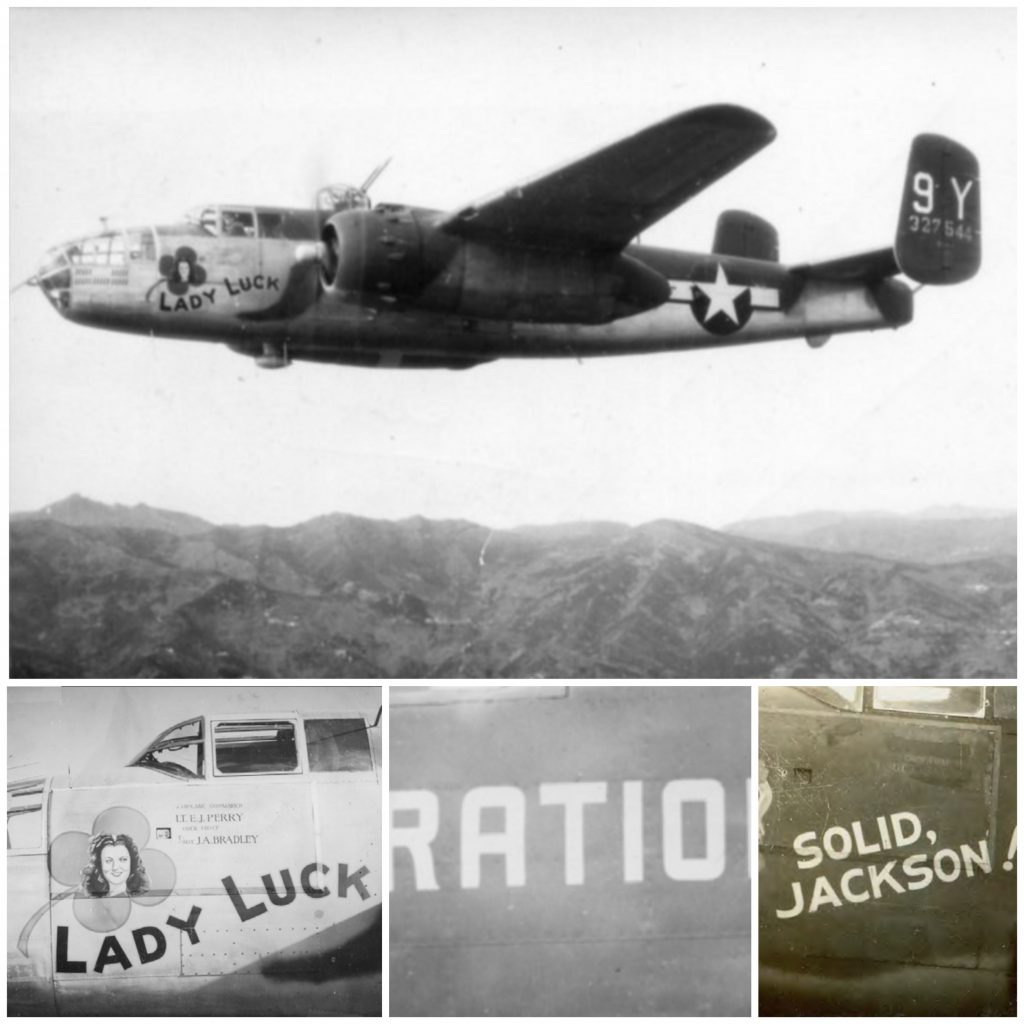
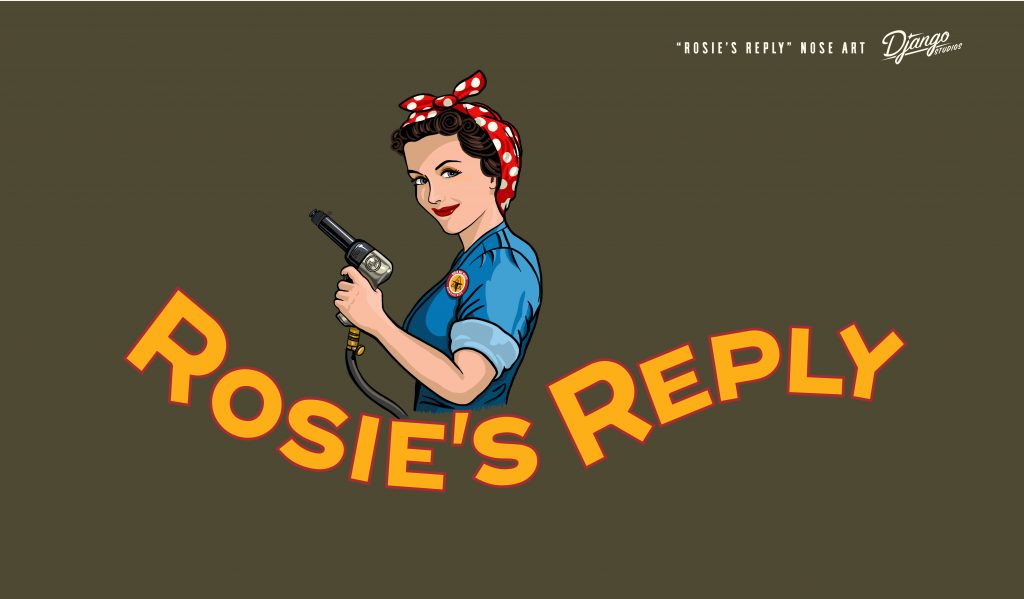
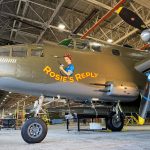

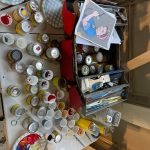
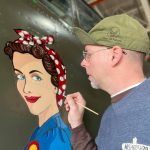
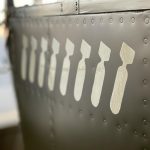
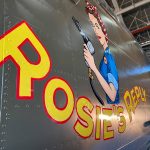


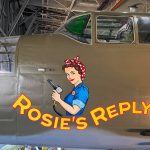
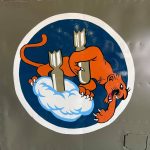
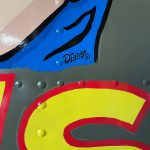
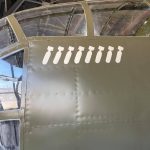
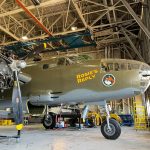
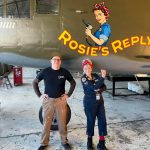

That’s a nice tribute but what about the men who were crewmen on the Yankee Warrior, by renaming it you have erased their accomplishments. I think you could’ve found a B-24 that was never named and named it Rosie’s Reply and it would’ve been more appropriate since Willow Run built the B-24 not the B-25 and left Yankee Warrior as is.
And why is this Rosie so stereotypical? When are we going to see an African American Rosie honoured? And what about the men who were also on the production lines? While Rosie’s Reply is well-meaning, we also have to be careful we don’t turn wartime propaganda into an enduring myth.